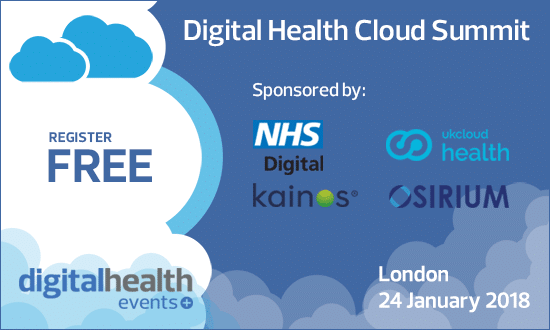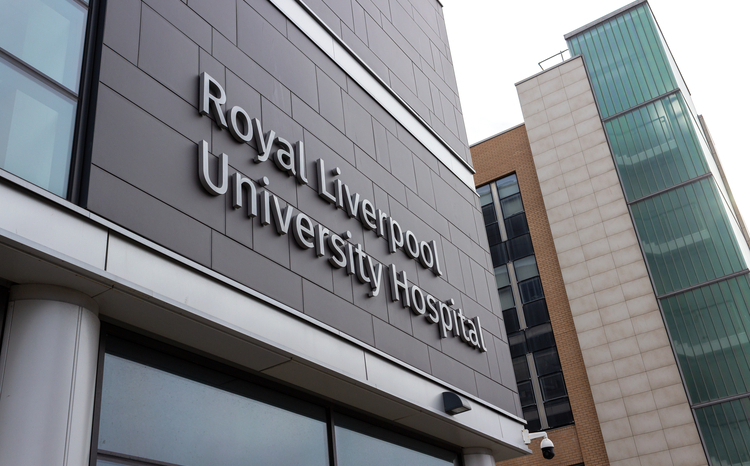Is cloud hitting a tipping point?
- 10 January 2018

Digital Health Intelligence research shows a growing number of NHS trusts see cloud as their next big IT project. Ahead of Digital Health’s new Cloud Summit on Wednesday 24 January, Vivienne Raper explores why healthcare IT professionals and vendors are increasingly seeing cloud as a valuable solution.
A new report from Digital Health Intelligence shows just how high on the agenda cloud now is for many NHS organisations. Around a third of the trusts surveyed for the paper said they were already delivering part of their infrastructure through the cloud. And, notably, 39% of the 163 surveyed organisations said they planned to introduce some element of cloud-based infrastructure within the next two years.
Reducing costs
According to Tara Athanasiou, director of research and networks at Digital Health Intelligence and co-author of the report, there are plenty of reasons for such a level of interest. One of the key ones, she says, is that cloud “makes it quicker, easier and arguably more cost effective to switch on new services”.
Buying new hardware, as Athanasiou points out, is “clearly very expensive” and, for a short term trial or pilot project, “a hell of an investment.” But cloud arguably makes it simpler to temporarily boost storage or compute power.
The CIOs she interviewed for the report also told her cloud makes it easier to measure costs, “as you’re paying directly for what you’re using, rather than trying to estimate over some period of time”.
Saving time
And it is not in the only initial financial outlay that organisations are finding potential efficiency savings. Cloud can also free up IT department resources.
“When you upgrade pieces of software, it’s incredibly time consuming for NHS organisations to do that themselves,” says Athanasiou. With cloud solutions, upgrades and software patches are managing by the software supplier – and can be deployed remotely – so allowing in-house teams to apply their expertise to more valuable tasks.
“Linked to those points is there’s less remedial work [for in-house teams],” Athanasiou adds. “All software and hardware needs to be maintained and there are constantly issues, such as bugs that need fixing. That creates a lot of work.”
She suggests deploying cloud could therefore help trusts which are currently finding it hard to attract and retain talented IT staff. “Finding the right staff with the right skills is a challenge for NHS organisations,” she says. “If you’re having this problem, delivering through the cloud takes the pressure off.”
Delivering security
It may also reduce worries about security. Unsupported operating systems, such as Windows XP, were a significant part of why the NHS was vulnerable to WannaCry. Cloud services have the potential to improve cyber security across the NHS, Athanasiou argues, by making it easier for trusts to have software which remains entirely up to date.
Otherwise, when Windows 7 and Office 2016 support expires in 2020, “there’s the potential of a Windows XP-type situation where NHS trusts are running unsupported operating systems. That’s not a position CIOs want to be in”.
Growing demand
Athanasiou expects the NHS to face growing pressure on its IT infrastructure over the next two years, with advances in genomics and population health management increasing the computational power required.
“We’re talking about quite early days, but understanding the current health of the population and predicting demand on services needs huge amounts of patient data, and the power to run that is vast,” she says.
Being able to scale up data storage or analytics, on demand, without committing to massive IT infrastructure purchases is – she says – a huge driver towards cloud.
Incremental progress
But adoption of the technology is currently incremental, Athanasiou explains. “From the CIOs we’ve spoken to, very few organisations are taking a ‘we’re going to do everything on cloud’.”
According to the Digital Health Intelligence IT infrastructure report, 20.8% of acute trusts use cloud for email and collaboration, compared to just 4.2% for backup and archive.
“Cloud is a process,” says Athanasiou. “What we’re not seeing is every organisation ripping everything out and starting afresh in the cloud.”
New opportunities
Most NHS trusts have existing IT infrastructure and contracts in place with suppliers, but – as contracts come to an end – she suggests “they’ll put cloud into the mix to evaluate.” And she suggests that as the NHS begins to think of cloud, so too should suppliers.
“Vendors with a specific business model to take NHS infrastructure or existing clinical applications into the cloud have a huge business opportunity,” she suggests. “Existing suppliers also need to look at cloud as a commercial and delivery model for their software solutions.”
Digital Health’s Cloud Summit takes place on Wednesday 24 January 2018 at One Moorgate Place in London. It will explore how to successfully deploy cloud-based services in UK healthcare – and consider what the benefits might be. Places are limited, so register now to secure your spot at this free of charge event.





2 Comments
Dan,
That’s complete nonsense. “playing with boxes and wires” !
Not true that “local email systems had to be shut down because they had lost control”. Local email was shut down by some because they suspected it, but regardless of that the issues were people could not connect, even to NHS mail, because many had actually taken their network connection off line. Those with local email in those circumstances were, in fact, fine!
This comment really has no basis, and should be retracted. It’s an insult to those who run a largely very reliable and effective service.
Despite this there are still far too many hospitals stuck in the 1990’s playing with boxes and wires. Resources are being wasted on running local systems and services and worse still putting lives at risk.
You only had to look at the recent wannacry outbreak. Those worse impacted were mostly using local email systems which had to be shut down because they had lost control. Meanwhile the national NHS email service remained live.
Also worth noting that these local services typically take longer to recover because they don’t have the expertise, infrastructure or resources to call on when things go wrong.
Of course the fact patients suffer and die due to poor IT won’t stop the NHS crying “we’re different” to protect their cottage industry.
Comments are closed.